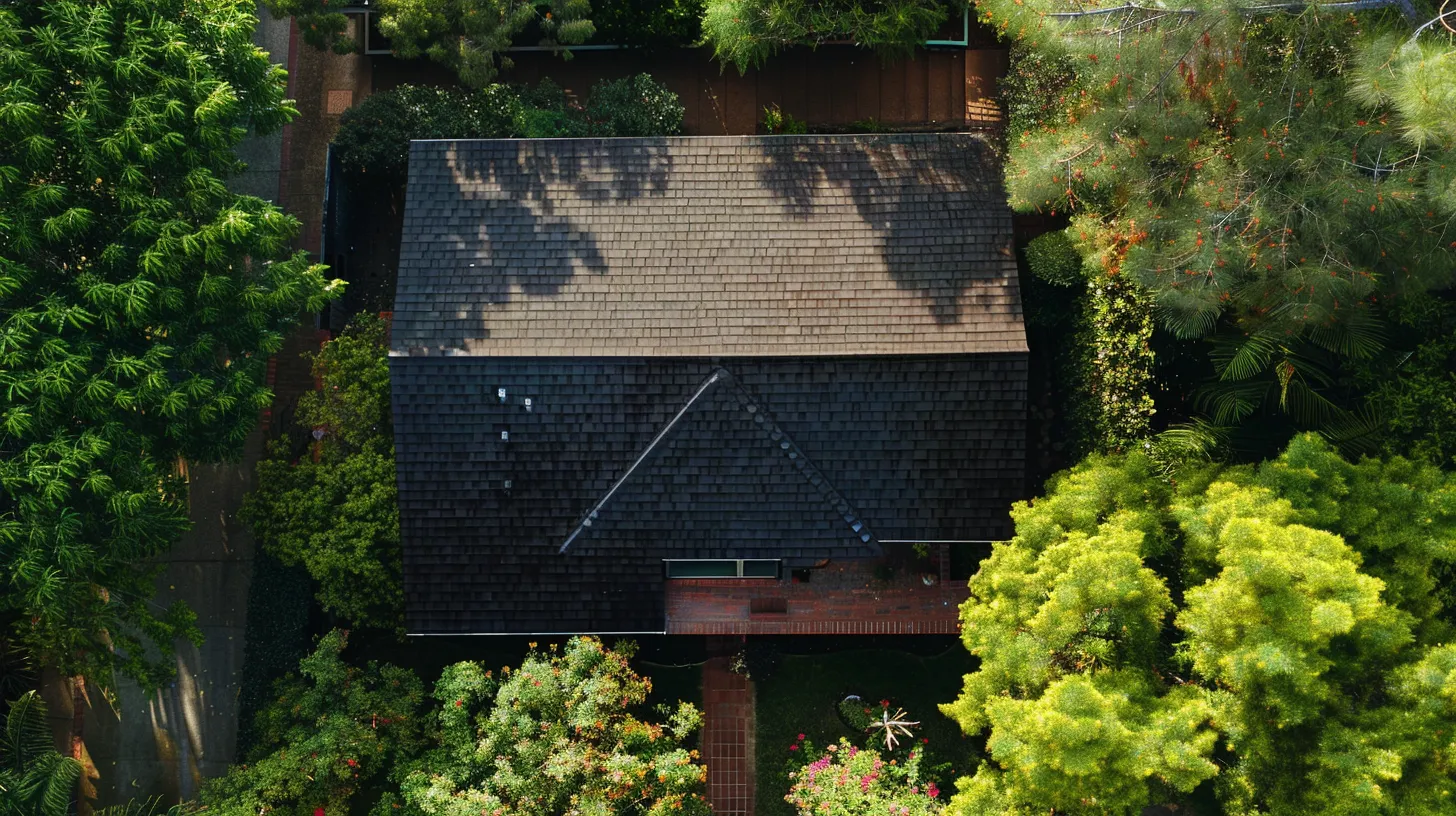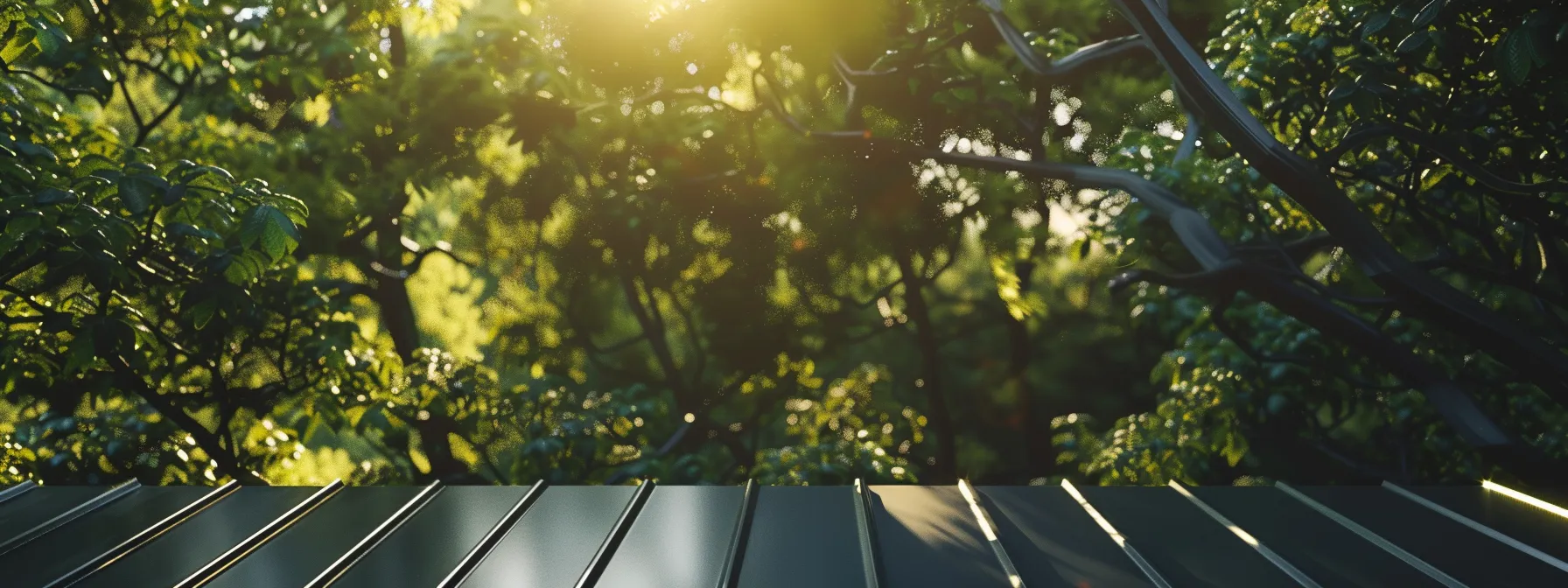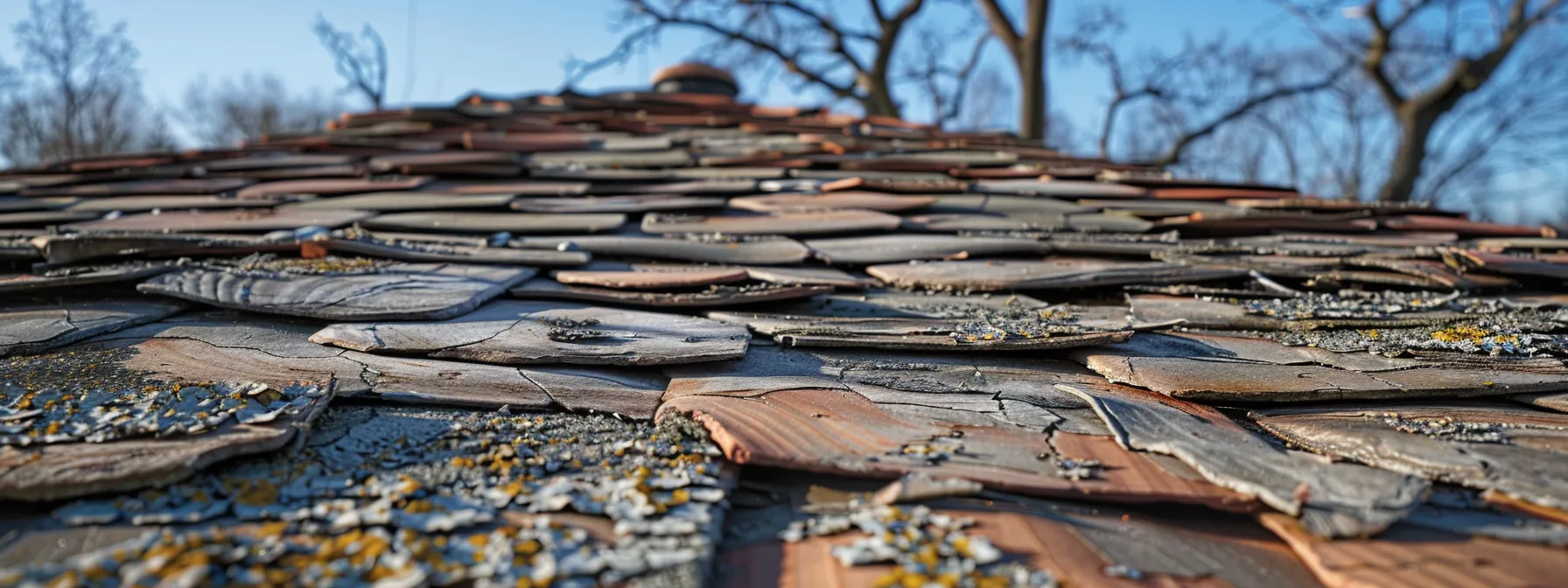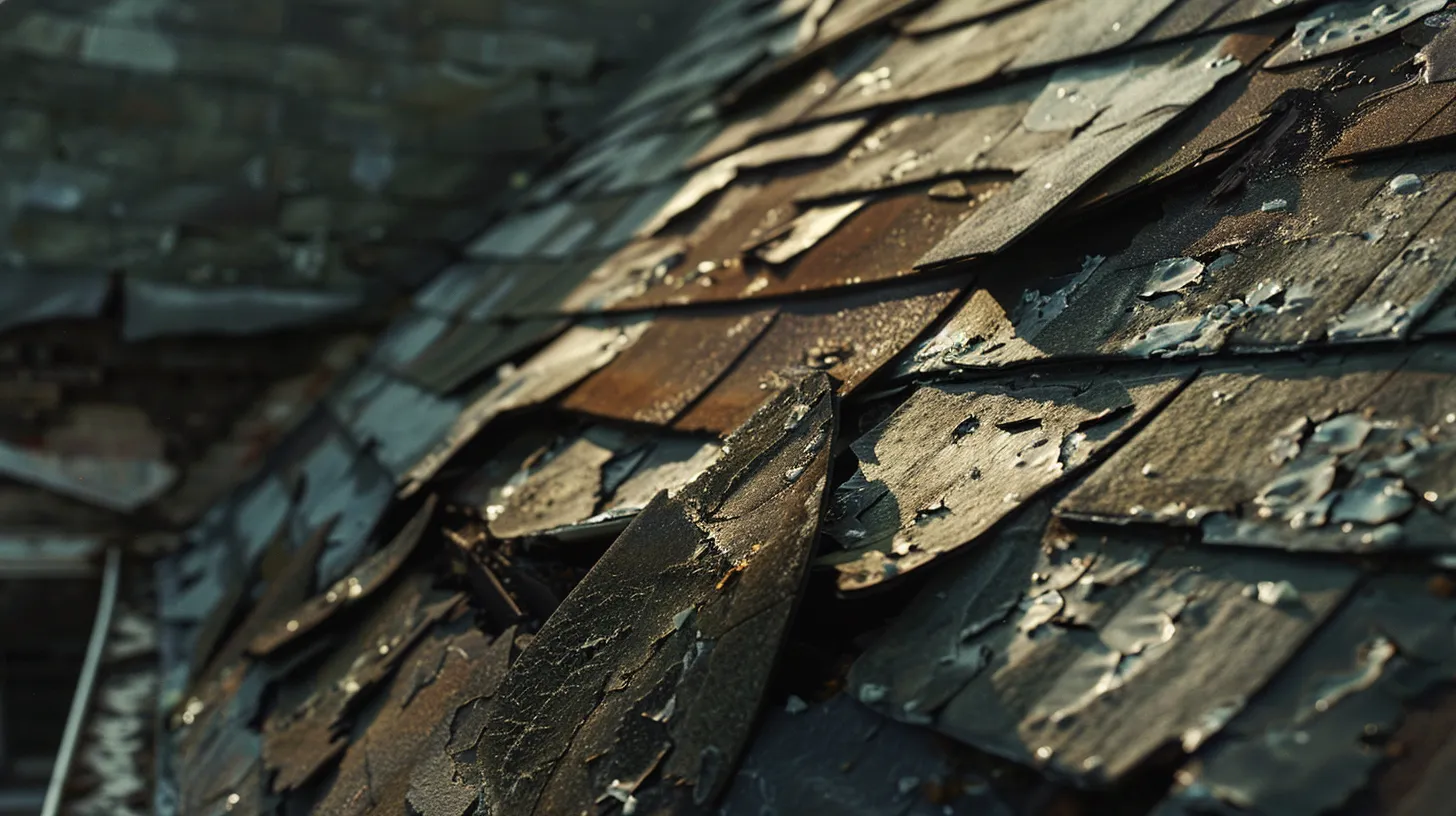
Roof Considerations Essential for Home Buyers
What to Look for in a Roof When Buying a House
Are you worried about hidden repair costs when buying a house? This post shows you how a proper roof inspection can protect your investment. You will learn to assess a roof’s condition, identify critical components, and consider factors like weather exposure. You also gain guidance on working with qualified roof inspectors. With clear steps and practical advice, your roof inspection process will be smooth and confident.
Key Takeaways
- you check roof certification records to verify professional work
- you evaluate the roof, foundation, and ceiling for any visible damage
- you ask targeted questions about repair history and inspection details
- you use clear evaluations to negotiate and secure your home investment
You check the roof certification to verify the structure’s quality before buying a house. You know that a clear record confirms the work was inspected by skilled professionals.
You evaluate the foundation and ceiling for any visible signs of damage. You look for gaps or weaknesses to prevent future repair issues.
You inspect the property for pest issues and potential hazards like lead paint:
- Review roof certification records thoroughly.
- Examine the foundation for stability and durability.
- Assess the ceiling for signs of leaks or cracks.
- Check for evidence of pest intrusion around the structure.
- Look into any instances of lead paint to ensure safety.
You take action by asking specific questions about each area during the visit. You use this approach to safeguard your investment and assure the home meets your standards.
Your key points stand firm and plain. You will soon learn why a close look at your roof makes a true difference when purchasing your home.
Understand the Importance of a Roof Inspection Before a Home Purchase
You assess residential roofing to gauge property value while noting how flashing details impact safety. You learn that roof inspectors can flag deterioration potentially affecting indoor air quality and drive up repair costs. You also weigh the roof inspection cost as a key factor in your overall maintenance plan.
Recognize the Impact of Roof Condition on Property Value
You recognize that a well-maintained roof contributes positively to your property’s overall worth. A thorough inspection can reveal early signs of water damage that might lead to costly roof-repair-replacement projects if not addressed properly.
You should consider how a roof’s condition can affect value, especially when linked with issues that extend into the basement. Asking about a home warranty and reviewing previous repair records during an inspection can help you avoid future problems and protect your investment.
Explore Potential Safety Issues Related to Roof Deterioration
You check the roof for any signs of decay that might indicate underlying problems such as termite damage, and you rely on an experienced roofer to help identify early issues. You keep an eye out for obvious signs that suggest you might be dealing with a bad roof, and you ask your contractor to review the overall condition to avoid future safety concerns.
You also inspect areas near skylight installations where water damage might occur, as these spots can reveal critical vulnerabilities. You ensure that your contract with professionals includes a thorough evaluation, so you have a clear understanding of any potential hazards before making a purchase decision.
Assess Long-Term Maintenance and Repair Costs
You carefully evaluate long-term repair costs when you examine your roofing structure, paying attention to life expectancy and changes in roofing quality. You consult a roofing inspector to spot hazards and issues in the attic:
- Review the roof’s life expectancy based on current performance.
- Inspect the attic for signs of leaks or improper ventilation.
- Identify any hazard areas that could lead to future repair costs.
- Ensure the roofing material remains in optimum condition.
You base your decisions on detailed information from past maintenance records and input from experienced professionals. You use this practical data to set an accurate budget for roofing maintenance and repair, keeping your investment secure and your home in excellent condition.
Now you see what matters; now learn what to check. Read on to find the parts that guard your home.
Identify Key Components of a Roof Inspection
You assess the roof by evaluating its structure and design, checking the materials and their lifespan, detecting leaks or water damage, and ensuring proper ventilation and insulation. A real estate agent or lawyer may join your home inspection, including reviewing the crawl space and radon levels for added safety.
Evaluate the Structure and Design of the Roof
You inspect the roof’s structure by observing the overall design and checking for common signs of leak, while also noting the placement of electrical wiring to ensure safety. A comprehensive roof inspection before buying a house lets you detect the impact of hail and evaluate the design’s resilience.
You assess the layout by verifying that drainage systems effectively manage water flow and prevent accumulation. This careful examination helps you confirm that the roof is built to last and supports your investment without future costly surprises.
Inspect Roofing Materials and Their Lifespan
You inspect roofing materials to determine their remaining lifespan and overall performance; you verify that wood elements are sturdy and free from hazards such as asbestos or lead, which could impact your property value and home insurance decisions:
- Examine wood for signs of decay
- Test for traces of asbestos in older materials
- Identify any lead presence in metal components
- Assess overall material durability for long-term performance
- Consider how material condition may influence home insurance
You rely on firsthand expertise during the inspection to compare current conditions with maintenance records, ensuring that each detail supports a sound purchase decision. You request a detailed review from your contractor to verify that the roof meets your safety and quality standards while protecting your investment.
Check for Signs of Leaks or Water Damage
You check the roof carefully to spot any water stains and mold that may indicate persistent roof leaks, ensuring each surface gets a close look by an experienced inspector to gather all necessary details for negotiation:
You rely on a seasoned inspector to confirm that the roof remains in robust condition, using their report to guide your negotiation and secure a purchase that upholds your home’s integrity. This straightforward approach allows you to address concerns about roof leaks and mold efficiently without overcomplicating your decision-making process.
Look for Proper Ventilation and Insulation
You ensure that the roof inspected provides adequate airflow and insulation, which helps maintain an energy-efficient home and reduces potential moisture issues. You know that strong ventilation and proper insulation can support smooth escrow processing and mortgage approval, protecting your credit and preserving cash for future investments.
You rely on professional evaluations to verify that ventilation systems and insulation materials meet current standards, safeguarding your property over time. You also recognize that a well-maintained roof inspected by experts not only secures your property’s value but also eases transaction processes whether you use cash or seek mortgage options.
You have uncovered the vital parts of a roof inspection. Now, you turn your attention to the forces outside that shape and test its strength.
Investigate External Factors Affecting Roof Condition
You consider environmental factors that influence roofing durability, including nearby trees and local weather patterns. You assess how vegetation might impact roof wear and how varying climate conditions can shorten lifespan. This review gives you practical insights, preparing you to make informed decisions during your home purchase.
Consider Environmental Elements Influencing Roofing Durability
You assess the roof’s durability by looking at factors like nearby trees and local weather. You check that roofs withstand rain, wind, and sun exposure while minimizing debris impact, which can affect long-term roof performance.
You review the roof during a site visit to notice any wear due to seasonal changes or environmental exposure. You focus on signs of damage that weather conditions might cause, which helps you decide if the roof maintains its quality over time.
Analyze the Influence of Nearby Trees and Vegetation
You check the area around your roof to see how the presence of nearby trees might affect its overall condition. You notice that overhanging branches or dense vegetation can scatter debris onto the surface, which may lead to minor damage over time.
You assess if the roof shows signs of scratches or moisture accumulation from falling leaves and other natural elements. You rely on your observations and trusted professional advice to decide if routine maintenance or protective measures are needed to preserve your property’s quality.
Review Local Weather Patterns Impacting Roofing Lifespan
You consider local weather patterns when assessing the roof’s lifespan. Temperature extremes, heavy rain, and strong winds influence the durability of roofing materials and can affect your maintenance costs over time.
You consult with professionals familiar with the local climate for practical advice on regular upkeep. Their insights help you plan timely repairs to keep the roof in functional condition and support a secure investment.
You have seen how harsh elements wear down your roof over time. Now work with qualified inspectors who can pinpoint issues and guide you toward secure repairs.
Engage With Qualified Roof Inspectors
You should verify inspector credentials, compare various inspection services, and ask detailed questions about inspection reports and follow-up actions. This approach helps you find a qualified roof inspector who can deliver expert evaluations, ensuring your roof meets safety standards and supports your home remodeling plans. Each step offers practical insights for making an informed purchase decision.
Know What Credentials to Look for in a Roof Inspector
You check that your roof inspector holds proper licensing, insurance, and certified training to make sure they meet state and local regulations. Here is a table summarizing the key credentials you should verify:
You should ask for documented proof of credentials and detailed work history to be confident in their capability. This hands-on verification provides clarity and peace of mind while you move forward with your home remodeling plans.
Understand the Differences Between Various Inspection Services
You compare various inspection services to determine which provider best meets your needs. You examine providers that offer visual roof reviews, full-system evaluations, and in-depth moisture checks to decide which service suits your project best:
- Visual roof assessments
- Detailed interior examinations
- Moisture and leak detection tests
- Personalized evaluation reports
You focus on choosing a service that delivers clear, actionable insights and works with experienced roof inspectors. You value providers who explain their findings in straightforward terms, making it easier to plan your home purchase and remodeling projects confidently.
Inquire About Inspection Reports and Follow-Up Actions
You ask for detailed information in the inspection report to understand every issue that may affect the roof’s performance. You focus on clarity when discussing findings, ensuring that each problem is documented along with recommended follow-up actions to secure your investment.
You request that the qualified roof inspector explain each step needed to address the identified concerns. You use their actionable advice and clear guidance to plan your repairs and future maintenance, giving you confidence in your home purchase.
Skilled inspectors expose what lies beneath your roof. Now, stay sharp as you watch for red flags that warn you of hidden issues.
Recognize Red Flags During a Roof Inspection
You can spot signs of poor repair work or improper installation, identify areas prone to frequent repairs, and evaluate any history of storm damage. This overview sets the stage for practical tips and expert insights to assess roof quality, ensuring you make informed decisions when buying a house.
Spot Signs of Poor Repair Work or Improper Installation
You evaluate the roof closely and notice signs of poor repair work that might indicate shortcuts in the work completed. You spot mismatched materials and uneven seams that suggest an improper installation process:
You take these findings seriously and use them to ask targeted questions during your inspection. You gather specific details to compare with professional evaluations, ensuring you address any concerns before finalizing your purchase decision.
Identify Areas Prone to Frequent Repairs
You notice that certain sections of the roof show clear signs of recurring damage, such as repeated patches and worn-out shingles. You evaluate these areas carefully during your inspection to determine if previous repairs have addressed underlying issues or only served as temporary fixes.
You inspect for spots where the repair work appears inconsistent or outdated, which may indicate ongoing problems that require frequent attention. You rely on your careful observation and professional advice to decide if these red flags necessitate further investigation before finalizing your purchase decision.
Evaluate Any History of Storm Damage
You examine the roof for clear signs of past storm events that may have weakened its structure. You look for issues such as broken shingles or water stains that signal previous damage from high winds or heavy rains.
You ask for detailed records from your inspector to determine if repairs were made correctly after severe weather. You use this information to gauge potential future risks and to plan for proper maintenance, ensuring your investment remains secure.
These red flags reveal the true state of your roof and hint at hidden troubles. Next, examine how each imperfection might add up to a higher expense.
Consider the Financial Implications of Roof Issues
You should consider repair or replacement costs, factor the roof’s condition into your negotiations, and review home insurance requirements for roofing. This section presents practical advice on budgeting for repairs, adjusting your offer based on current roof quality, and aligning with insurance guidelines to safeguard your investment when buying a house.
Estimate Costs for Immediate Repairs or Replacement
You need to evaluate the repair costs by obtaining detailed quotes from trusted professionals. You use this information to determine if immediate repairs are within your budget or if a full roof replacement might be necessary based on visible damage and current wear conditions.
You benefit from comparing estimates to ensure you are prepared for potential expenses. You analyze these figures to make an informed decision that secures both your investment and your home’s long-term stability.
Factor Roof Condition Into Home Negotiations
You ensure that you factor in the roof’s condition during your home negotiations by reviewing inspection reports and repair history. You use detailed assessments as leverage to request cost adjustments and clearly outline future expenses:
You ask targeted questions during discussions to address potential repair needs, ensuring the financial implications of roof issues are reflected in your final offer. You use this strategic approach to secure a purchase that aligns with the long-term stability of your investment.
Analyze Home Insurance Policy Requirements Related to Roofing
You verify that your roofing system meets the requirements outlined in your home insurance policy by reviewing coverage details and speaking with agents about specific standards. You focus on understanding the insurer’s criteria, such as acceptable roof materials and documented repair history, to secure proper coverage and prevent insurance claim issues.
You also discuss your roof inspection report with your insurance provider to ensure that all noted conditions align with their policy mandate. You use this insight to plan for any necessary maintenance or repairs, helping you maintain a roof that supports both your home’s value and efficient home insurance processing.
Every repair costs more than you would like, and the figures leave no room for doubt. Now, we wrap up these points with a sharp look at your next steps.
Conclusion
You review the roof closely, ensuring that all aspects meet your expectations. You rely on thorough roof inspections to secure your home investment and safeguard future maintenance.
Your evaluation covers certifications, materials, design, and repair records, providing a clear picture of the roof’s condition:
- Review roof certification records for quality assurance
- Examine the structure for durability and stability
- Assess repair history and maintenance data
- Confirm proper ventilation and insulation standards
You use professional advice to make informed decisions, reducing potential expenses and unexpected issues. This focused approach helps you keep your property safe and well-maintained.
You finish your assessment with confidence, knowing that clear, detailed evaluations support a secure and sound investment in your home. This careful review process ensures every aspect of the roof aligns with high standards.
Frequently Asked Questions
What should I review in a roof inspection report?
Review report sections detailing material wear, water leaks, flashing, shingle condition, and gutter function. Verify repair costs, recommendations, and noted issues for a thorough understanding of your roofing condition.
How can I spot roof red flags during an inspection?
Examine the roof for loose, missing, or curled shingles, and check for rusted flashing and water stains on rafters. Also inspect gutters for debris buildup and sealant integrity, as these indicate potential leaks.
What external factors influence roof condition?
Extreme weather, airborne pollutants, falling debris, and salt exposure from coastal breezes can weaken roof materials and lead to damage. Regular professional inspections help maintain structural integrity and prevent extensive home remodeling in Chantilly, VA.
Why is a professional roof inspection crucial when buying?
A professional roof inspection uncovers hidden issues that can lead to costly repairs while protecting your investment. Rely on our expertise at Platinum Home Design, LLC to guide you in making a secure, informed property purchase.
How do roof issues affect overall home purchase costs?
Roof problems may add unforeseen expenses such as repair fees, replacement delays, or extra remodeling costs. A thorough roofing inspection helps you assess your investment and prevent further financial burdens when purchasing a home.
Conclusion
You examine every detail, from certification records to visible signs of damage, to ensure the roof meets safety and quality standards. You evaluate the structure, materials, and repair history to verify the home’s long-term durability. You ask targeted questions and insist on professional evaluations that inform your purchasing decisions. You secure your investment by using these clear, practical insights to guide your roof inspection and overall home evaluation.




